(5K20.30) Jumping Rings
$0.00
The solenoid is connected to an AC power source, producing a magnetic field that oscillates along its axis. The iron core intensifies the field of the solenoid, making it into a powerful ac electromagnet. By Faraday’s Law (or Lenz’s Law), currents are induced around the wire-bulb device when placed on the axis of the solenoid, thus causing it to light and establishing that there can be such eddy currents. Then, the solid ring becomes an electromagnet, which jumps when placed along the axis of the solenoid; by Lenz’s Law is of the type that does not “like” to be in a time-varying field, and thus “jumps” out. The TAMU “jumping ring” consists of a white PVS cylinder with winding, a capacitor, and a spring (to hold the cylinder on top of the apparatus). On this ring, the capacitor phase dominates.
Second purpose: Demonstrate magnetic induction with a light bulb. Closing the switch produces a current in the primary coil, which is coupled to a secondary coil (on top of a ferromagnetic core). The induced current in the secondary coil lights the light bulb.
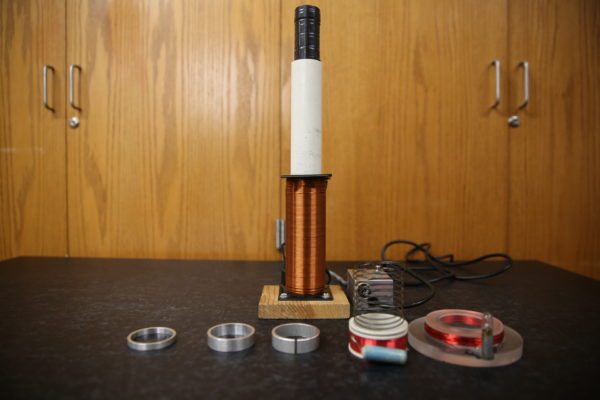
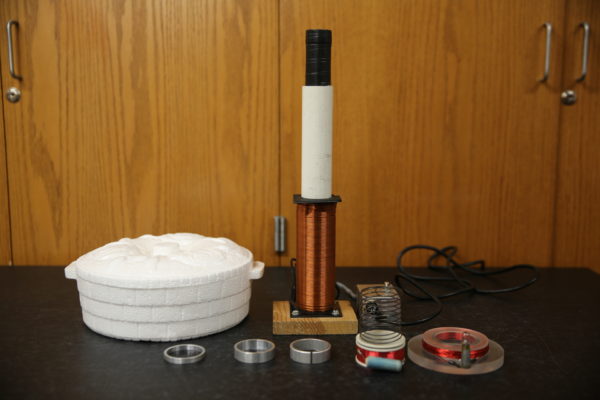
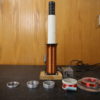
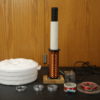
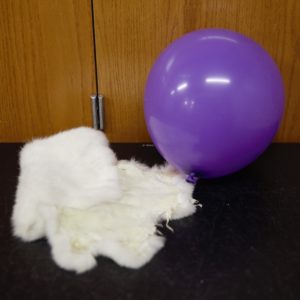

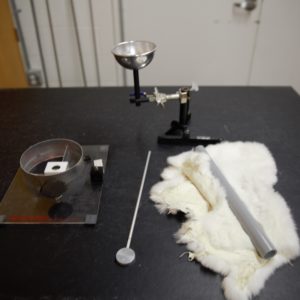

Reviews
There are no reviews yet.